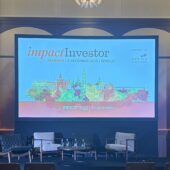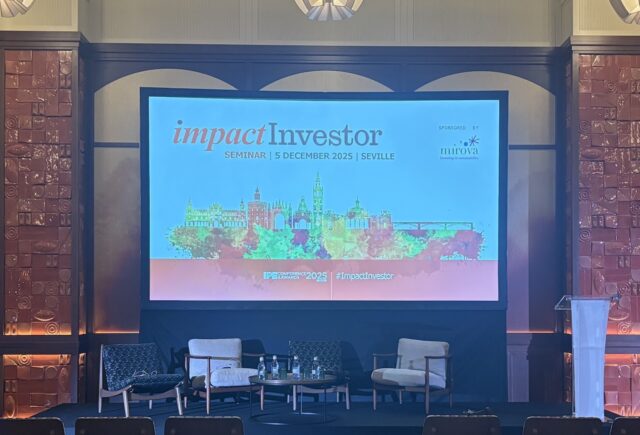The collaborative grouping of standards setters and impact tool providers has published new guidance and tools designed to drive faster adoption of wide-ranging impact management.

Sluggish adoption of effective impact management by organisations has prompted the Impact Management Platform (IMP) collaborative grouping to produce a series of new explainers and roadmaps to speed up the process.
This output includes a paper intended as a call to action, which outlines why and how organisations should adopt impact management (IM ) strategies targeting system-wide risk along with idiosyncratic risks.
IMP uses system-wide risk as an umbrella term covering both risk originating from the market’s dependencies on environmental and social resources (systematic risk), and major disturbances in environmental and social systems that affect the economy and financial system (systemic risk). Idiosyncratic risk is that specific to an individual entity.
There is also an updated online guide offering a roadmap om IM implementation, known as Actions of Impact Management. Finally, the IMP has produced an explanation of key terms and concepts related to impact in an effort to standardise the language around IM and avoid confusion over what is required to implement it successfully.
Removing ambiguity from impact measurement through harmonisation of approaches and standardising definitions is a key part of the work of the IMP, which is a collaboration between providers of standards, frameworks, tools, and guidance for managing sustainability impacts.
These include the IFC, the United Nations, the OECD, Principles for Responsible Investment (PRI), B Lab, the Global Impact Investing Network (GIIN), the Global Reporting Initiative (GRI), the Global Steering Group for Impact Investment (GSG) and the World Benchmarking Alliance (WBA), among others.
Eric Usher, the head of UN Environment Programme (UNEP) Finance Initiative, told an IMP-hosted webinar that there was still a tendency for organisations to focus on specific green initiatives to signal impactful engagement rather than looking holistically at how their activities impacted on the world and the effect that impact would have on their business in the future.
“All market actors have an incentive to understand and then start to manage their impacts on people and the natural environment. Impact management is very much not about identifying something that’s very green and talking a lot about it,” he said. “It’s the big picture, understanding the overall business model and what impact it has, not some specific activities being undertaken.”
Poor uptake
Usher said one reason that uptake of IM was being held back was that it was “not simple for corporates and other reporters to make sense of all the moving parts”. However, the IMP partners’ willingness to reach consensus on issues such as IM standards and terminology was a step in the right direction, he said.
Gerbrand Haverkamp, executive director of the WBA, said most companies performed badly in the WBA’s sustainability benchmarking because they were either not managing impact, or only partially doing so.
While the operations of companies and their supply chains, and the products they sell were “very consequential” for the world and society, the impacts did not seem to be consequential enough to many companies, he said.
Haverkamp said investors, policy makers and regulators needed to act to make sure that there were rewards for impact leaders and penalties for laggards.
“To ensure that there’s actual accountability is going to be one of the major things we have to focus on in the coming years. And to create accountability, you first need to have clarity on the role of business and its responsibility, and I think this is particularly where IMP is contributing.” he told the webinar.
Financial institutions had a key role to play by adopting their investment policies to reward impactful behaviour of companies in their portfolios, but that, currently, “ they simply do not have enough of a grasp of the impact of the companies that are they invested in or lending to”, according to Haverkamp.
Carrot and stick approach
Clay Brown, head of standards, certification and product delivery at B Lab said companies lacked an understanding of the risks that they are facing, how to put in place practices to measure and take steps to ameliorate those risks, and how addressing these risks could ultimately be good for business.
He said a carrot and stick approach was needed, regulating on impact disclosure to encourage laggards to catch up, but at the same time highlighting that making a business more sustainable was good for both the planet and the bottom line.
“Businesses are really good at replicating what their peers and competitors are doing, following those guiding-light businesses that show how this is done, both to drive impact but also to be successful in economic terms,” Brown said in the webinar.
Drive for greater impact disclosure
In its call to action, the IMP said governments should encourage and enable the mainstreaming of IM, and that standard-setters and international organisations providing IM resources should collaborate in moving towards a complete, coherent system of standards and resources.
The IMP also said that standard-setters and policymakers should recommend that organisations should disclose of a wide range of information on impact, where appropriate, given it may be financially material.
Vincent Siegerink, OECD lead liaison to the IMP, told the webinar there was growing evidence that businesses and their investors were being affected by system-wide impacts.
“What we really want to highlight is that this is already the case, this is not some kind of long-term future scenario. The market is already reliant on environmental and social systems,” he said.
Large institutional investors had a particular incentive in managing system-wide risks and opportunities given their portfolio exposures to these risks, according to Siegerink.
“One of the messages in this paper is that a large share of information on impact may well be relevant from a financial materiality perspective,” he said.
One reason for this was that information on impact may signal the emergence of new idiosyncratic risks and opportunities. Another was that it may signal an organisation’s contribution to cumulative system-wide risks and opportunities, which may be inform decision-making by investors concerned about managing these factors.
The level of information an organisation should be obliged to disclose about the impact of its operations on the world and vice versa has been a hot topic recently. The International Sustainability Standards Board (ISSB) published its inaugural standards for corporate climate and sustainability reporting in June, which, if adopted widely, will allow investors to compare how companies are adapting their business strategies to take account of climate change, and related social and natural world impacts.
Also in June, The EU published the latest draft of the European Sustainability Reporting Standards (ESRS) under its Corporate Sustainability Reporting Directive (CSRD), which included changes to the pace of introduction and extent of disclosures considered material to sustainability reporting that critics said would water down their impact. A month-long window to allow stakeholders to provide feedback on the draft closed on July 7.






